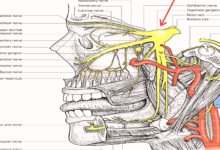
Selecting the Best Local Anesthetic for Injection
Amide and ester classes of local anesthetics exist.
The two types of anesthetics, amide (lidocaine, bupivacaine [Marcaine]) and ester (procaine, tetracaine [Pontocaine]), have both been used historically.
However, esters fell out of favor after reports of increased sensitization. 1
Amide anesthetics are sufficient for the majority of common office operations.
The most adaptable and widely used amide anesthetic is lidocaine.Because of its quick onset and moderate duration of action, lidocaine—the first medication of the amino amide type to be put into clinical practice in 1943—is still widely used today.
Lidocaine is offered in solutions with concentrations ranging from 0.5 to 4 percent, but no studies have examined the effectiveness of the various solutions.
When a smaller injection volume is required, lidocaine at a 2 percent concentration may be especially helpful.
Bupivacaine has a prolonged duration of action and an intermediate start.
When prolonged anesthesia is required but epinephrine is not recommended, it is extremely helpful (i.e., for joint injections and digital nerve blocks).
Although they can be utilized in the office, other amide group anesthetics are typically saved for spinal and regional anesthesia.
Epinephrine can be added at a ratio of 1:100,000 to 200,000 (5 to 10 g per mL) to extend the time that the patient is under anesthesia and to help with some degree of hemostasis.
The doctor might have to wait before doing surgery when dealing on highly vascular areas like the scalp.
Epinephrine takes around five minutes to begin having its best vasoconstrictive impact.
The maximum recommended dose of lidocaine increases from 4 to 7 mg per kg1 due to the vasoconstriction and subsequent delay in absorption provided by epinephrine

Information from references 3 through 5.
Anesthesia Solution Combinations
The advantages of blending short- and long-acting anesthetic solutions have not been well studied in randomized, double-blind trials 6,7.
The clinical benefits of combining lidocaine and bupivacaine have not been conclusively demonstrated in research. 1,6,7
Bupivacaine with or without epinephrine or lidocaine with epinephrine are suggested if anesthesia is needed for more than 30 to 60 minutes.
principles of injection
The anesthetic vial and the skin should be cleaned with alcohol wipes prior to injection.
On intact skin or mucosaa membrane, it has been demonstrated that alcohol wipes are just as effective as chlorhexidine (Peridex) or povidone-iodine (Betadine). 8
To draw up the anesthetic solution, the doctor should use a large-gauge needle; however, before injecting, he or she should switch to a small-gauge needle.
To lessen the chance of injecting straight into the vascular area, the needle should be put into the location and the plunger should be pulled back just a little. In order to lessen the discomfort of reinsertion, the anesthetic should finally be carefully absorbed into the tissue.




